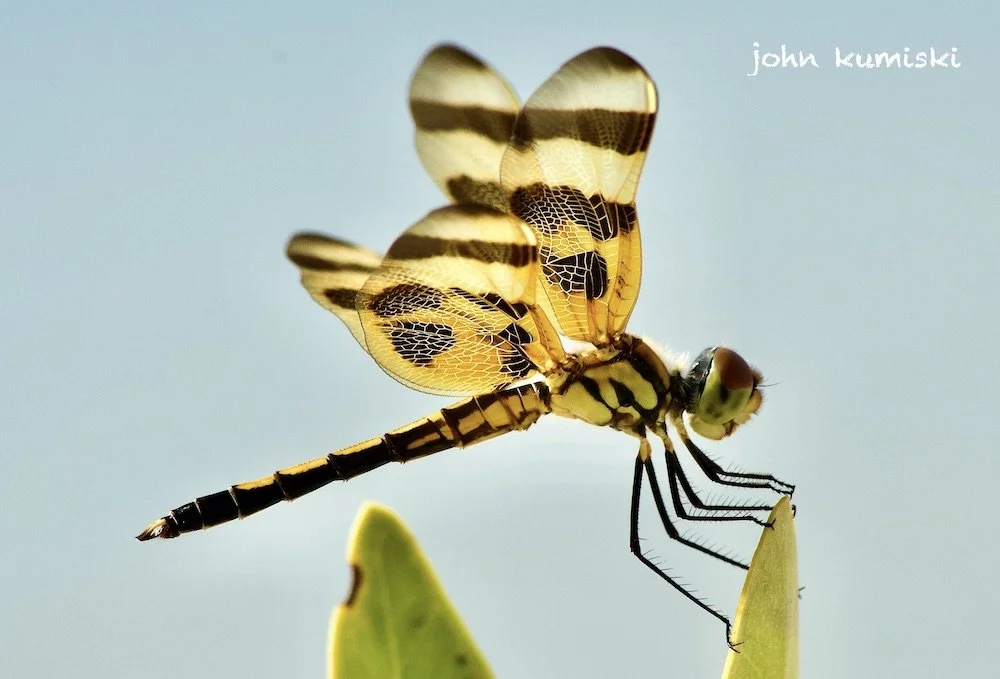One of the most fearless and voracious fish swimming around in the eastern United States today is the Bowfin. Also called dogfish, mudfish, mud pike, swamp trout and grindle, these hungry predators are always on the hunt for something to eat.
All in Wildlife Watching
Wildlife Watching Wednesday: The Belted Kingfisher Is A Minnow Predator
If you spend much time along lakes and waterways during the warm-weather months, you will likely see one of my favorite birds: the belted kingfisher. These birds are slightly larger than a robin, and they are an interesting blue-gray color above with a white belly and a white ring around their neck.
Wildlife Watching Wednesday: Great Lakes Brown Trout
Brown trout are one of the three main species of trout living in Lake Michigan: including brown trout, lake trout and rainbow trout (steelhead). During the winter and early spring months when the weather is cold, brown trout are one of the easiest of the three species to catch out on the big lake.
Wildlife Watching Wednesday: Yellow-Bellied Sapsuckers Are Unusual Woodpeckers
Everyone who has spent any amount of time outside has seen or heard a woodpecker at one time or another. Several species live in the eastern half of the United States, including red-headed woodpeckers, red-bellied, downy, hairy, pileated and yellow-bellied sapsuckers.
Wildlife Watching Wednesday: Fireflies Light Up the Night
Many of us grew up chasing fireflies in our yards during the summertime. They were fun to watch and even more fun to catch. These insects are also called lightning bugs, and both names are appropriate since these creatures have the ability to light up with their amazing internal light source.
Wildlife Watching Wednesday: Hummingbirds In The Garden
Hummingbirds are amazing little creatures. They are the smallest birds that will visit your back yard this summer, and they are definitely one of the most interesting. Hummingbirds can hover in mid-air, and they are also the only birds that can fly backwards.
Photographing Dragons
Dragonflies were part of my youth. My father was a freshwater fisherman- dragonflies are found around freshwater. I grew up watching their amazing aerial acrobatics.
Wildlife Watching Wednesday: Inquisitive Chipmunks Are Always Hungry
The Eastern Chipmunk is a common sight in backyards, parks and woodlands throughout the most of eastern United States and southern Canada. They do not live in the coastal areas of southeastern states, as they both prefer forested and colder habitats, but wherever they are found these curious little mammals are fun to watch.
Wildlife Watching Wednesday: The Tiger Swallowtail Butterfly
If you’ve seen a large yellow butterfly in your yard or garden this summer, chances are good that it was a tiger swallowtail butterfly. Tiger swallowtails are one of the easiest butterflies to identify in the eastern United States since they are bright yellow with very distinct black “tiger stripes” on their forewings.
A Visit To The Alexander Springs Run
Any visitor to Florida's Ocala National Forest needs to include the Alexander Springs Run on their list of things to see. This first-magnitude spring discharges over 60 million gallons of spring water daily, with a boil strong enough to be easily observed from the shoreline.
Wildlife Watching Wednesday: The Red-Headed Woodpecker
Woodpeckers are one of our most recognizable wild birds. They easily cling to the vertical trunks of trees as they hammer away at the hard wood with their sharp beaks, searching for tasty insects to eat.
Wildlife Watching Wednesday: The Largemouth Bass
Most fishermen (and fisherwomen) are very familiar with the Largemouth Bass. This common fish goes by many names: black bass, green bass, largie, bigmouth bass, bucketmouth bass, and often just plain bass.











